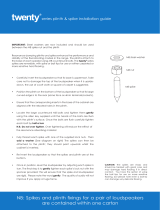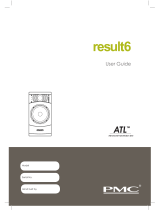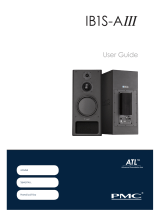
Read these instructions and keep them in a safe place for future reference.
Heed all electrical safety warnings, including any on the loudspeakers themselves.
Do not use the loudspeakers near water.
The cabinet should only be cleaned with a dry, lint-free, cloth. Do not use solvents,
abrasives, waxes or liquids as they may be detrimental to the nish.
Four soft, self-adhesive feet are included with the twenty5.C. These can be
attached to the base of the unit to provide vibration-free operation.
Floor spikes are sharp; treat with great care during installation and use.
Do not install near any heat sources such as radiators, ovens or other equipment
that produce excessive heat.
Unplug this product from both source and power during electrical storms, or when
unused for extended periods of time.
Packing material can pose danger to the young and vulnerable. Ensure these
items are kept or disposed of safely.
High volume audio signals, however short their duration, have the potential to
cause hearing damage. Use care when setting the system volume level to ensure
playback sound pressure levels remain within safe comfortable limits.
Do not attempt to service the equipment. There are no user serviceable parts
inside. Please refer all servicing to PMC authorised personnel.
Servicing is required when the apparatus is damaged, exposed to moisture,
or exhibits a distinct or sudden change of operation or audio performance.
PMC has made efforts to provide accurate installation information and good
quality xings. PMC will not be held responsible or liable for injuries or property
damage – direct, indirect or consequential – arising out of use or inability to use
this product safely and properly.
twenty5 loudspeakers contain very powerful magnets and therefore may have
a detrimental effect if left in close proximity to magnetically sensitive items.
Do not use the Laminair vent as a grip to lift the loudspeaker as this may result in
damage.
General usage guidelines


































